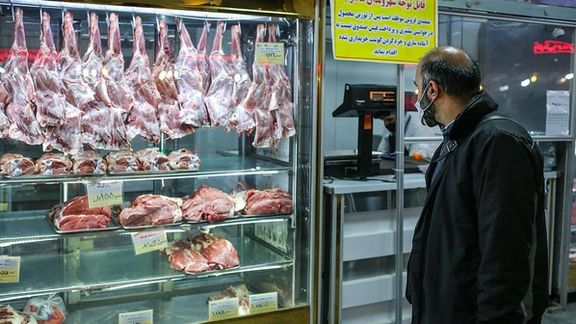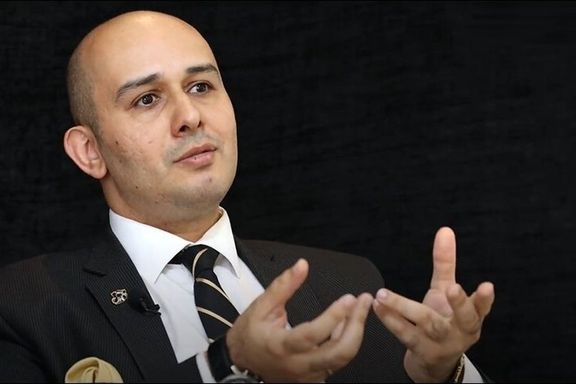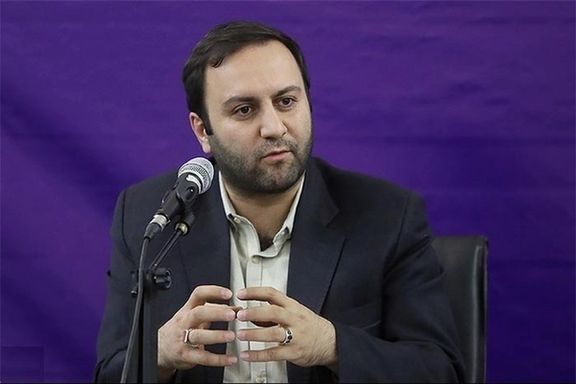Millions Of Iranians Sinking Into Poverty As Social Risks Loom

Experts predict that an expected hike in inflation will sink millions of Iranians deeper into poverty with food prices being the most acutely affected.

Experts predict that an expected hike in inflation will sink millions of Iranians deeper into poverty with food prices being the most acutely affected.
Currently the official annual inflation rate is 47.5 percent – the highest rate in Iran for more than 30 years -- but prices for foodstuff are most affected, with the price of cooking oil rising by more than three times annual inflation at 145 percent, and the price of meat also rising by 78 percent over a one year period (point-to-point).
Economist Peyman Molavi told Iranian news website Rouydad24 on Tuesday that if the current status quo persists, the country will face an exponential rise in inflation rates and millions will be affected.
“If the economic growth rate in Iran approaches zero and the money supply (also known as market liquidity) increases more than 36%, the inflation rate will be between 55 to 60 percent,” he said.
He also warned that “if the money supply grows by more than 40 percent per month, and the economic growth is around one to two percent, we may witness an inflation rate of 70 percent.” However, the World Bank estimated Iran’s annual growth rate at 2.7 percent in 2022, mostly based on information it receives from official Iranian sources..

Such a high rate will have crippling effects on regular citizens. According to a report published by ILNA website in Tehran in January, one-third of the country’s population is now living in extreme poverty, with the number almost doubling from 2020 to 2021. However, it is believed that the real number could be far higher. According to official figures released by Interior Ministry, around 60 percent of Iranians live under the relative poverty line.
"If we fail to address and tackle this situation seriously as part of the Seventh Development Plan, we will soon face a grave crisis in the social well-being of our society," Iranian lawmaker Mohsen Pirhadi said on Monday.
Since the 1940s, Iran has launched 12 plans to build infrastructure, establish key industries, expand public services and education. Five plans were launched under the monarchy until 1979, and seven during the Islamic Republic. Nevertheless, Iran is still considered a developing country, because it economic growth rate has averaged only 2.5 percent during the Islamic Republic.
Pirhadi added that the number of people living below the poverty line in the country has reached nearly 28 million.

The "poverty line" is a level of income that covers the minimum essential needs of a household, and incomes below the line are referred to as "absolute poverty”. According to Mohammad Bagheri Banai, a lawmaker and member of the parliament’s economic committee, the poverty line for residents of Tehran, is approximately 300,000,000 rials (approx $600) per month, which is three times as much as the minimum wage in Iran.
A leading economist said in May that at least half of Iran lives below the poverty line as the government fails to solve the economic crisis, and a report by the parliament’s research center released in July said the population below the absolute poverty line increased by 30.4% in 2021.
Pirhadi, the deputy head of the parliamentary committee for Iran’s Seventh National Development Plan, stated that the economic decline in the past decade has led to social decline and a rise in financial corruption, drug abuse, and increased migration to large cities.
Over the past decades, there have been several factors hindering Iran's economic development. The revolutionary chaos of the early 1980s, and the Iran-Iraq war that caused hundreds of thousands of casualties, derailed Iran from its modernization trajectory. The Islamic government, built on an anti-Western ideology that engaged in hostage taking and supporting militant groups left the country isolated. And in addition, the inefficiency of successive clerical governments and many years of international sanctions crippled the country's economy.
The remarks by Pirhadi came a few days before the latest report by Iran's Statistics Center -- whose director was sacked by the president earlier in July. Although Iran's Statistics Center is administered and funded by the government and operates under the umbrella of the Planning and Budget Organization, it maintained a veneer of credibility as one of the very scarce sources of both economic and social data.
The Islamic Republic's authorities are trying to use new definitions and indices for the inflation so that the official figures do not increase to numbers that can create panic in the market. The country’s economy has proven especially vulnerable to sociopolitical developments, such as rumors about a possible revival of the nuclear deal or large labor strikes.